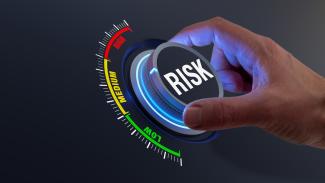
Understanding Risk Management For High Net Worth Individuals
Understanding Risk Management
The process of detecting, assessing, and controlling financial, legal, strategic, and security threats to an organization's capital is known as risk management. These dangers or risks could arise from various sources, such as financial instability, legal liability, strategic management failures, accidents, or natural calamities.
Effective risk management entails controlling future outcomes as much as possible by acting proactively rather than reactively. As a result, effective risk management has the potential to minimize both the likelihood and magnitude of a risk.
A successful risk management program assists a business when considering all of the risks it confronts. Risk management also investigates the relationship between various business risks and the potential for cascade effects on an organization's strategic goals. A systematic, systemic, and integrated risk management approach can aid in determining how to identify best, manage, and reduce severe risks.
You can start managing risk once you completely understand what it means. The risk management process has a series of actions, each leading to the next and crucial to your risk management program.
Why is risk management critical?
Risk management has never been more vital than it is right now. Modern firms' hazards have become more complicated as globalization has accelerated. New hazards emerge regularly, many related to or caused by the now-ubiquitous usage of digital technology.
Many firms' business executives and board directors are reevaluating their risk management plans. Organizations are rethinking risk exposure, risk processes, and who should be involved in risk management. Companies that now employ a reactive strategy to risk management (protecting against previous dangers and altering policies after a new risk causes harm) are evaluating the competitive advantages of a more proactive approach.
Furthermore, proactive risk management ensures that high-priority threats are addressed as aggressively as possible. Moreover, managers will know to make informed decisions and ensure the business's profitability.
Risk Management Steps
-
Risk Identification:
The identification of present and potential risks is known as risk identification. Businesses, for example, may face operational, financial, or cybersecurity risks. For this phase, you'll need to use your imagination to imagine the worst-case situations, ranging from natural disasters to economic disasters.
-
Assess the risks:
In many circumstances, problem resolution entails identifying the issue and devising a suitable remedy. However, before determining how to manage risks best, a company should identify the source by asking themselves, "What caused such a risk, and how could it affect the business?
-
Risk Prioritization:
Some threats are more dangerous than others and, hence, require more of your attention. Others may cause little risk and can be tolerated. An effective risk management plan necessitates risk prioritization based on risk levels. Prioritizing risk can help you save time and money. Prioritizing risks is a simple process. Examine your risk analysis and the materialization scores provided for each risk.
-
Create preventive measures for identified hazards:
The concepts discovered to be beneficial in risk mitigation are developed into a series of activities and contingency plans that can be deployed in the future. If dangers arise, the plans can be implemented.
Benefits of Risk Management
-
Broadens The Variety of Possibilities
Management can identify new chances and challenges related to current opportunities by assessing all prospects - both positive and negative aspects of risk.
-
Recognize and manage risk throughout the organization.
Risks can have an impact on many aspects of a company. A risk may emanate from one element of the organization while significantly impacting another. As a result, management distinguishes and addresses these entity-wide risks to support and improve execution and performance.
-
Reduce negative shocks while increasing gains.
Risk management enables businesses to improve their ability to identify risks and plan appropriate actions, reducing surprises and corresponding financial losses and allowing them to gain from positive development.
-
Improved Data Quality For Decision Making
Senior leaders seek better quality and more adaptable data, which enables them to make more informed judgments about a venture.
With the ability to access risk data in real-time via a venture, management can ensure that choices are made based on the most recent data rather than a report that is now obsolete before it reaches the executive team.
While implementing a risk management standard provides benefits, it has problems. The new standard may not fit into what you are presently doing. Therefore, you may need to introduce new ways of working. Furthermore, the standards may need to be tailored to your industry or firm.
